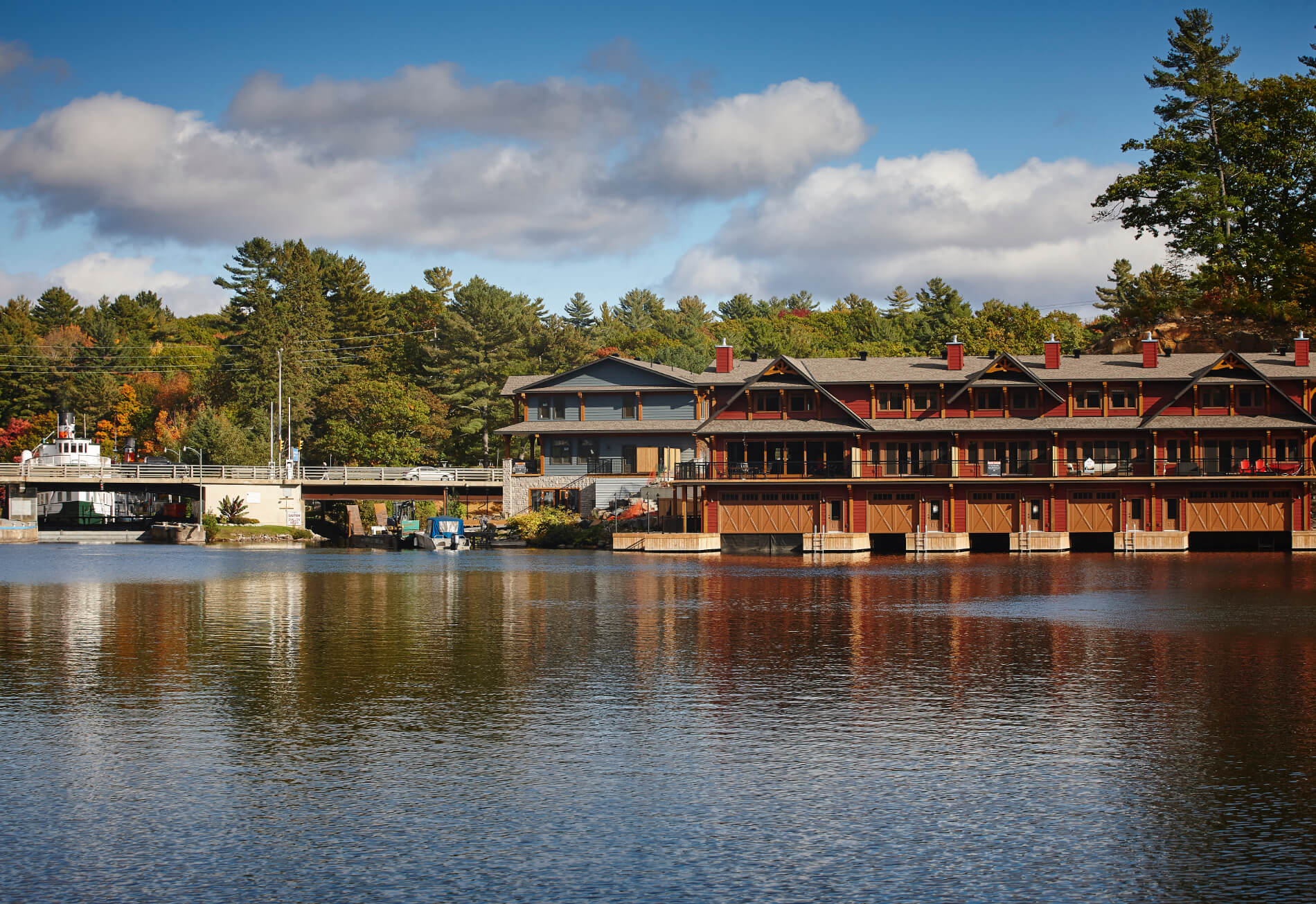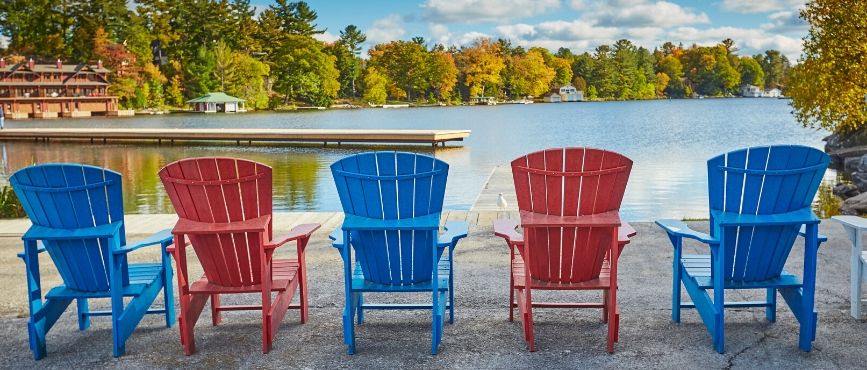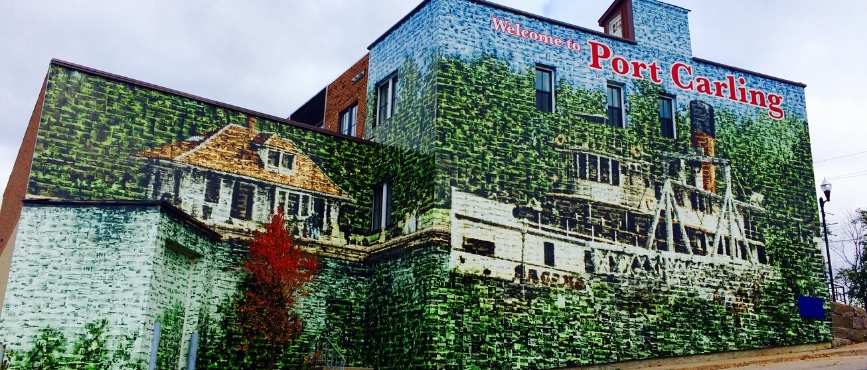
Heritage and History

History
The Township amalgamated in January 1971 and is made up of several former Townships including the Township of Cardwell, the Township of Watt, the United Townships of Medora and Wood, the Town of Bala, the Village of Port Carling, the Village of Windermere and a portion of the former Township of Monck.
The Townships were opened for settlement following the passage of the Free Grants and Homesteads Act in 1868. Prior to this, officials considered turning all of Muskoka into a Native Reserve.
The desire for land, coupled with the district's rich timber resources, compelled the government to reconsider. The Free Grants and Homesteads Act gave 100 acres of land to anyone who would build a house and clear 15 acres within five years' time. The head of a family “having children under 18 years of age residing with him” could claim another 100 acres. On February 8, 1870, the Corporation of the United Townships of Watt, Cardwell, Humphrey, Christie, Medora and Wood was formed (O.S. 1869 Chapter.57). Later, the individual townships became municipalities in their own right.
The Townships of Watt, Cardwell, Medora and Wood, portions of Monck Township, the Villages of Windermere and Port Carling and the Town of Bala amalgamated in January 1971 to form the Township of Muskoka Lakes. The municipal office is located in Port Carling.
| Bala |
|
Scottish-born Thomas Burgess named the community of Bala after the Bala Lake District in Wales. He arrived in 1868 and set up a sawmill on the Mill Stream. In time he also opened a general store, bakeshop, blacksmith shop and supply boat service and post office. In 1917 the Burgess family helped establish a hydroelectric facility on the site of Thomas's original sawmill. This generating station supplied power for much of the Medora and Wood Townships. The community of Bala officially became a town in 1914. Dr. A.M. Burgess, a son of Bala's founder Thomas Burgess, was the first Mayor in Bala. Bala, the town by the waterfalls, captures the true spirit of Muskoka. Known to many as home of the Cranberry Festival, the Kee to Bala, and Don's Bakery, it is a vibrant commercial centre. Bala has a large selection of unique retail shops and is home to a weekly farmer's market in the summer season. |
| Cardwell and Watt |
|
Cardwell was named after Viscount Cardwell, secretary of state for the Colonies in 1864-1866, while Canadian confederation was under discussion. The former Township of Watt was named after James Watt, a native of Greenock, Scotland, who invented the steam engine. The first meeting of Council for the United Townships was held January 16,1871 at Mr. Bogart's schoolhouse. Later, in 1878 the United Townships of Watt and Cardwell became separate corporate identities. |
| Medora and Wood |
|
An Act of Parliament created the Corporation of the United Townships of Medora and Wood in 1873 (O.S. 1873 Chapter 49). Medora was named after Mrs. Medora Cameron, who was the niece of the Honourable Stephen Richards, Commissioner of Crown Lands. The Township of Wood was named after the Honourable Edmund Burke Wood, who was Provincial Treasurer of Ontario in the John Sandfield MacDonald Government. He was later, from 1874 until his death in 1882, Chief Justice of Manitoba. Mr. Wood was known as "Big Thunder" because of his powerful voice and roaring speeches. |
| Monck |
| The Township of Monck was named after Viscount Monck, Governor General of Canada at the time of Confederation. The township was organized as a municipality in 1869. The first Reeve was J.B. Browning. Council meetings were held in the schoolhouse at Ziska until 1880 when the corporation purchased the former Ziska Methodist Church, which they used as a township hall. In 1959 Council meetings were moved to the Milford Bay community centre. An addition to the community centre in 1961 provided a boardroom for Council meetings and space for the Monck Township records. |
| Port Carling |
|
Port Carling, Muskoka's oldest community, began as an Ojibway settlement. The natives called their village Obajewanung, meaning "gathering place.” Europeans called the settlement "Indian Gardens." As more white settlers came to the area, the Ojibway relocated to Parry Island, near Parry Sound. In 1860, when surveyor Vernon Wadsworth visited, there were twenty native homes in Port Carling and plenty of cleared land where they grew their crops. In 1869 Benjamin Hardcastle Johnston applied for a post office. His application was accepted and a post office was established at Baisong Rapids, on the Indian River. Johnston named the post office Port Carling in honour of John Carling (1869). John Carling, the Minister of Public Works had been instrumental in building the locks. These locks would open navigation between Lakes Muskoka and Rosseau. Port Carling was incorporated as a village in June 1896, with a population of 110 people. Today Port Carling continues to thrive in its central location at the hub of the lakes. Large ships such as the Segwun and Wenonah II continue to delight visitors as they pass through the centre of town. For the shopper, the village has a huge selection of boutiques and eateries – all if which make Port Carling a tourist mecca from May to October. Its bright new community hall is a popular venue for theatre and musical events. The Norma and Miller Alloway Muskoka Lakes Library is located in Port Carling. This is the Main Branch of two in Muskoka Lakes. |
| Windermere |
|
The great community of Windermere came into being on January 1, 1868 when a post office of that name was established at Archibald Taylor's sawmill at the mouth of the Dee River. It was named after Lake Windermere in the Lake District of England. The post office moved to the home of Thomas Aitken in 1870. Aitken's home grew into Windermere House, one of the pre-eminent tourist resorts of Muskoka. The original settlers in the area were Frank and Elizabeth Forge, David and Ellen Fife, and Thomas Aitken. Thomas Aitken, a Shetland Islander, established Windermere House in a commanding location overlooking Lake Rosseau. He also convinced the Muskoka Navigation Company to make Windermere a port of call for the first steamboats on Lake Rosseau, the Waubamik and Nipissing, by agreeing to supply them with wood for the boilers. Windermere became an important stopping point between Port Carling and Rosseau. The Village of Windermere was incorporated on April 17, 1924. It was the smallest village in Ontario at that time. Henry Longhurst was elected reeve by acclamation. Council meetings were held in private homes or at the United Church Sunday School until 1953, when a municipal building was built. |
Heritage
Township Council is dedicated to conserving heritage properties, including designation, heritage easements, and planning tools. Township Council evaluates individual properties regarding historical and/or architectural significance and works with partners to implement programs and activities to increase public awareness and knowledge of our heritage properties.
| Heritage Designation |
|
Multiple properties in the Township of Muskoka Lakes have been designated. In many cases, the owners have approached the Township and requested designation as a way of recognizing the importance of their buildings. In other cases, the Council of the Township of Muskoka Lakes recognized the historical importance and heritage value of the Township's own properties. Designation is registered on title at Land Registry Office, and it carries on even after a property is sold. If subsequent owners wish to make changes to specific elements which were designated, they are required to obtain approval from Township Council. What are the steps for designating a property? There are six (6) key steps in designating a property under section 29 of the Ontario Heritage Act: 1. Identifying the property as a candidate for designation. The owner/applicant must submit an Application for Heritage Designation outlining why the property contains historical and/or cultural significance. Please include any information that may assist Township Staff and Council. 2. Researching and evaluating the property. A staff report will be prepared and presented to Township Council. Upon Council approval, the next steps of the designation process are initiated: 3. Serving "Notice of Intention to Designate", with an opportunity for objection. 4. Passing and registering the designation by-law. 5. Listing the property on the Township's Heritage Register. 6. Listing the property on the provincial register. Interested in applying, please complete and submit the Application for Heritage Designation to planning@muskokalakes.ca For more information, please view the below webpages: |
|
Heritage Property Tax Relief Program |
|
The Township of Muskoka Lakes has adopted a Heritage Property Tax Relief Program that provides an incentive to property owners to invest in the on-going conservation of their heritage buildings. The property tax relief program encourages and supports property owners to be stewards of their heritage properties by protecting our history for future generations. The Heritage Tax Relief By-law 2017-110 outlines the following:
Interested in applying? Please complete the Heritage Property Tax Relief Program Application form and submit to planning@muskokalakes.ca |
|
Designated Properties and Districts |
| Checkout the Township's list of designated properties. |
|
Township of Muskoka Lakes Heritage Register |
| Please view the Township's Heritage Register of of Inventory List - Heritage properties |
| Port Carling Wall |
|
The 111-by-45-foot photo mosaic, affectionately called The Wall, provides a breathtaking welcome to Port Carling. It comprises 9,028 pictures that together create the image of the RMS Sagamo passing through the Port Carling locks circa 1922. Viewed up close, however, each individual photo captures a moment of time in the lives of residents of Port Carling during the village's first century (1860-1960). It all began in 2004 with a suggestion from Don Oliver to the Mayor Susan Pryke, that the main street of Port Carling needed a facelift. The Mayor challenged Mr. Oliver to get involved, so he recruited Ian Turnbull, Ian Wallace and Greg Mannion to help him out. |
Special Events
Royal Visit, July 4, 1959
Her Majesty Queen Elizabeth II and her husband His Royal Highness Prince Philip, Duke of Edinburgh, arrived by train to visit the community of Torrance. That is how the Queen's Walk Road received its name.
Lieutenant Governor's Visit
The Honourable James K. Bartleman, Lieutenant Governor of Ontario, made his first official visit to his home town of Port Carling. At that time, His Honour visited the Township of Muskoka Lakes Municipal Office and signed the official guest book previously signed by Her Majesty Queen Elizabeth II and His Royal Highness, Prince Philip during their visit to Torrance in 1959. A reception at the Norma and Miller Alloway Muskoka Lakes Library followed the official visit in celebration of the occasion.
Geography
Muskoka Lakes Township is situated at the southern tip of the Canadian Shield. The craggy cliffs that rise above lakes and roadways date back to the days when life first began on this planet. About two million years ago, this section of the Shield was covered by a series of glaciers, which left behind the numerous lakes that define the municipality today.
The Township of Muskoka Lakes encompasses a large geographic area around Lakes Muskoka, Rosseau and Joseph. Within the 781.6 km2 lie 80 lakes. The natural beauty of the shorelines and the abundance of wildlife make Muskoka Lakes a pre-eminent tourism destination. While the Canadian Shield is a challenge to farmers, pockets of tillable land support a significant agricultural economy.
Whether you prefer small communities, rural areas, country settings or waterfront properties, Muskoka Lakes has it all. The municipality has encouraged positive growth, while at the same time protecting the historic significance, character and natural beauty of the area. The communities of Bala and Port Carling are the largest urban centres. Bala is located at the confluence of Lake Muskoka and the Moon River. Port Carling is situated between Lakes Rosseau and Muskoka.
Depending where you live in Muskoka Lakes Township you will find yourself relatively close to major towns such as Gravenhurst, Bracebridge, Huntsville and Parry Sound. The city of Barrie is about an hour's drive away, while North Bay, Sudbury and Toronto are easily accessible in two and a half hours.
Contact Us



 Subscribe to this Page
Subscribe to this Page